YAOWARAT (CHINATOWN)
Chinatown in Bangkok, known locally as Yaowarat (เยาวราช/ไชน่าทาวน์), is one of the city’s most vibrant and culturally rich neighborhoods. Located in the heart of Bangkok, it is not only a hub of Chinese heritage but also a bustling commercial and culinary center that draws locals and tourists alike. With its neon-lit streets, historic temples, and famous street food, Yaowarat offers an unforgettable experience steeped in history, culture, and delicious flavors.
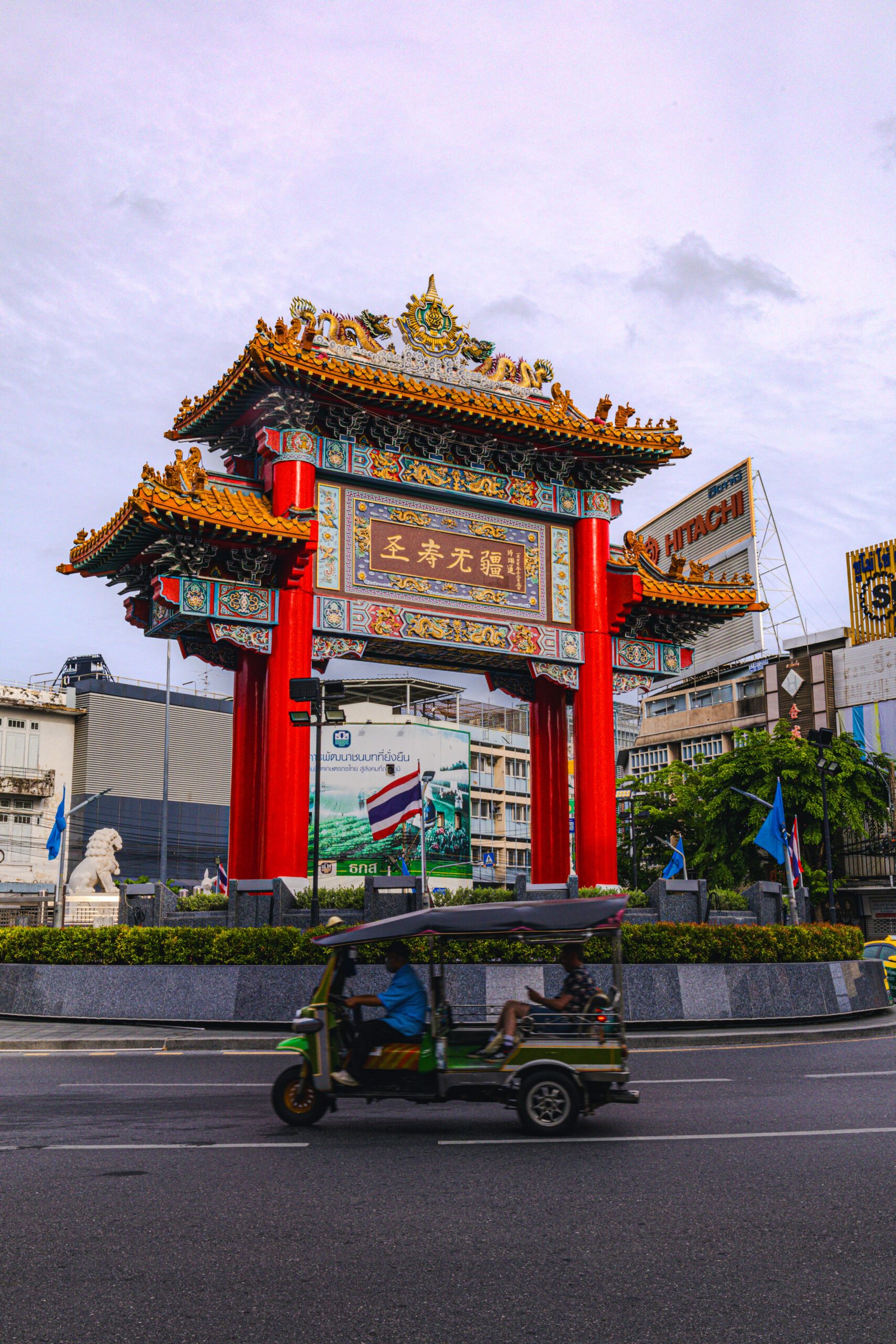
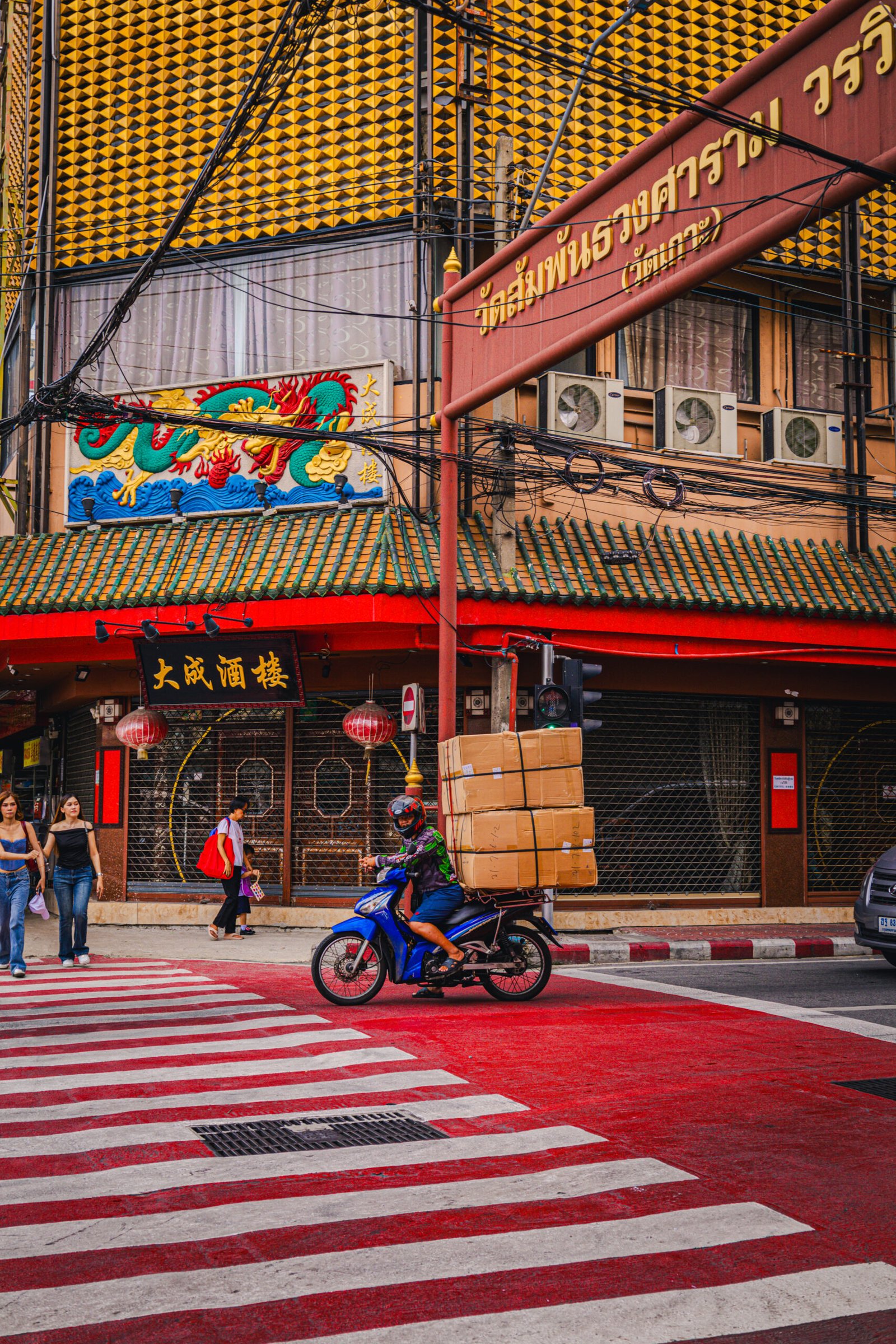
Chinatown was established in the late 18th century when Chinese immigrants, particularly from southern China, began settling in the area after being relocated from their original settlement near the Grand Palace by King Rama I. Over the centuries, Yaowarat has evolved into a lively center for commerce, with the Chinese community playing a significant role in Bangkok’s economic development.

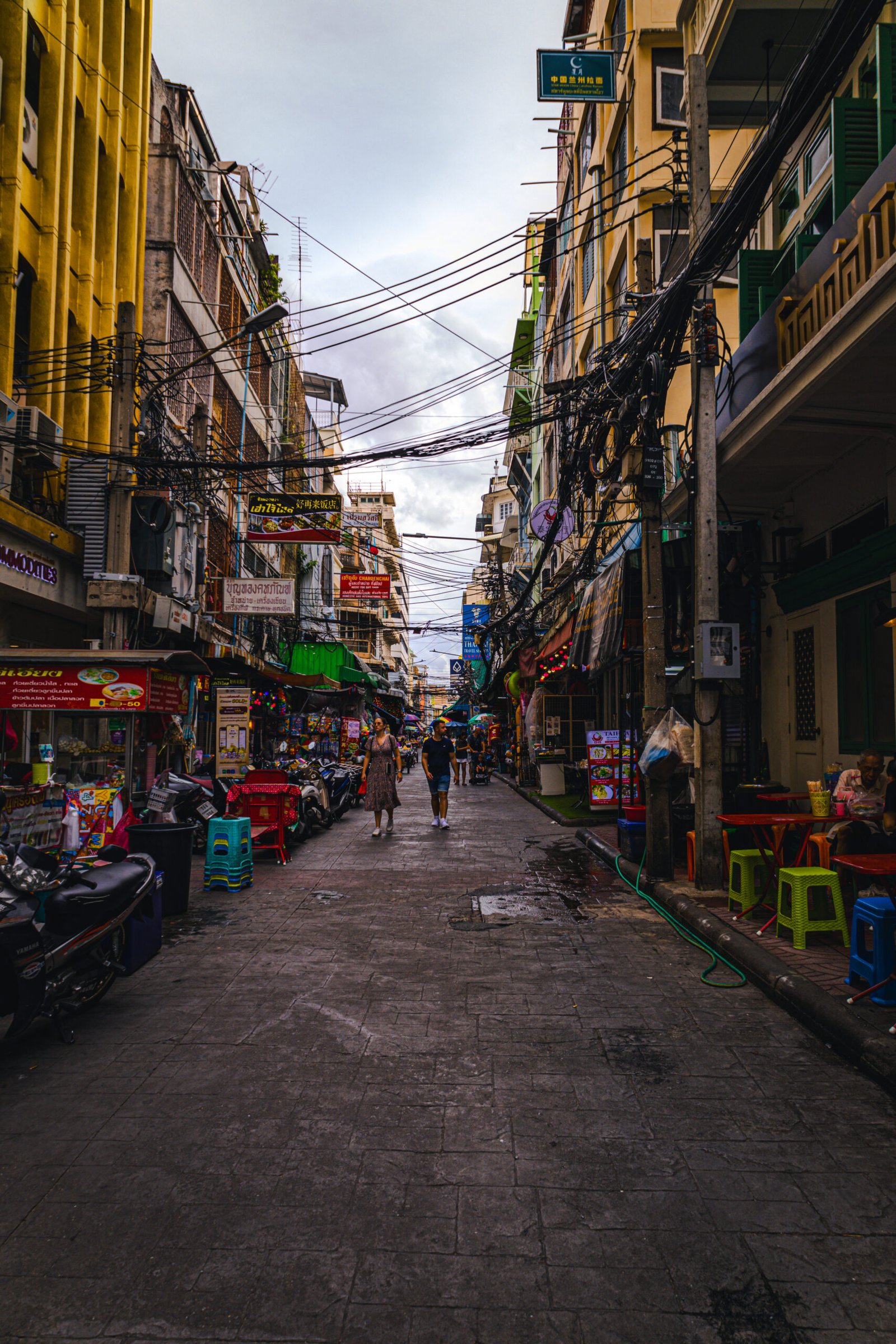
The area is named after Yaowarat Road, the main thoroughfare of Chinatown, which was constructed in 1891 during the reign of King Rama V. This bustling street, shaped like a dragon’s curving body in traditional feng shui belief, has since become the lifeblood of the neighborhood.

Yaowarat is legendary for its street food scene, regarded as one of the best in the world. The narrow streets come alive after dusk, when vendors set up stalls selling an array of Chinese-Thai dishes. The fusion of flavors, rooted in both Chinese and Thai culinary traditions, has made Chinatown a must-visit for food lovers.


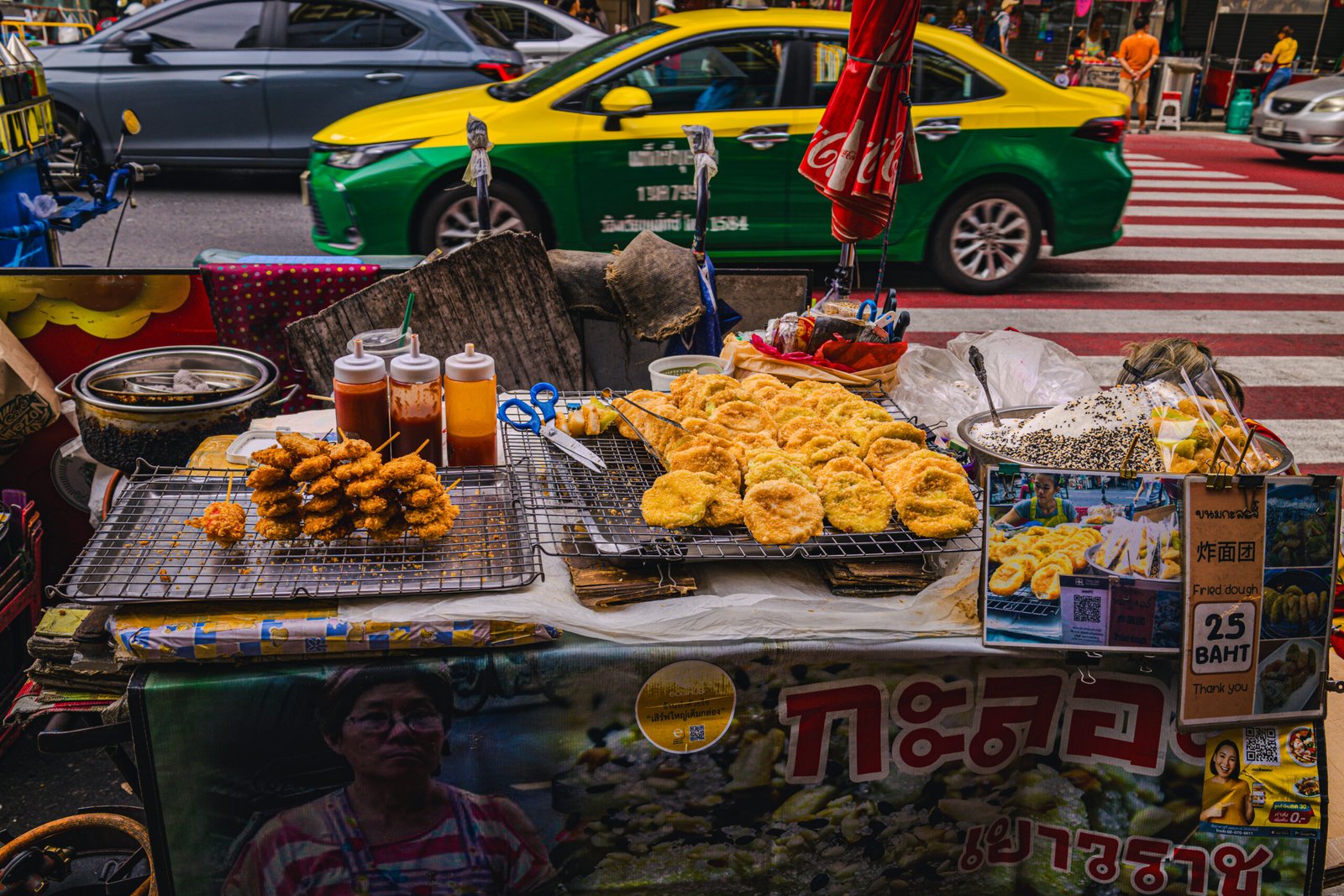
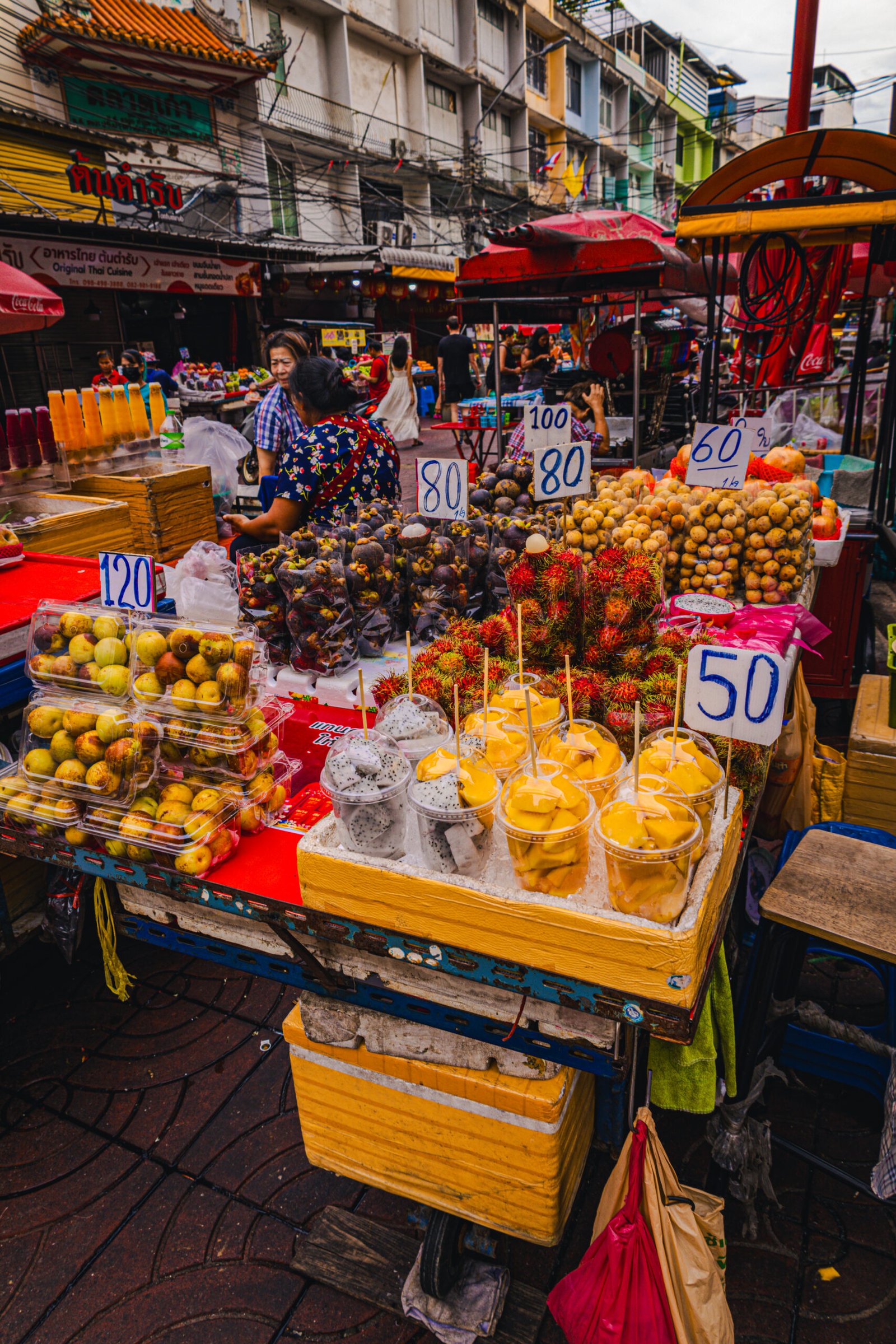


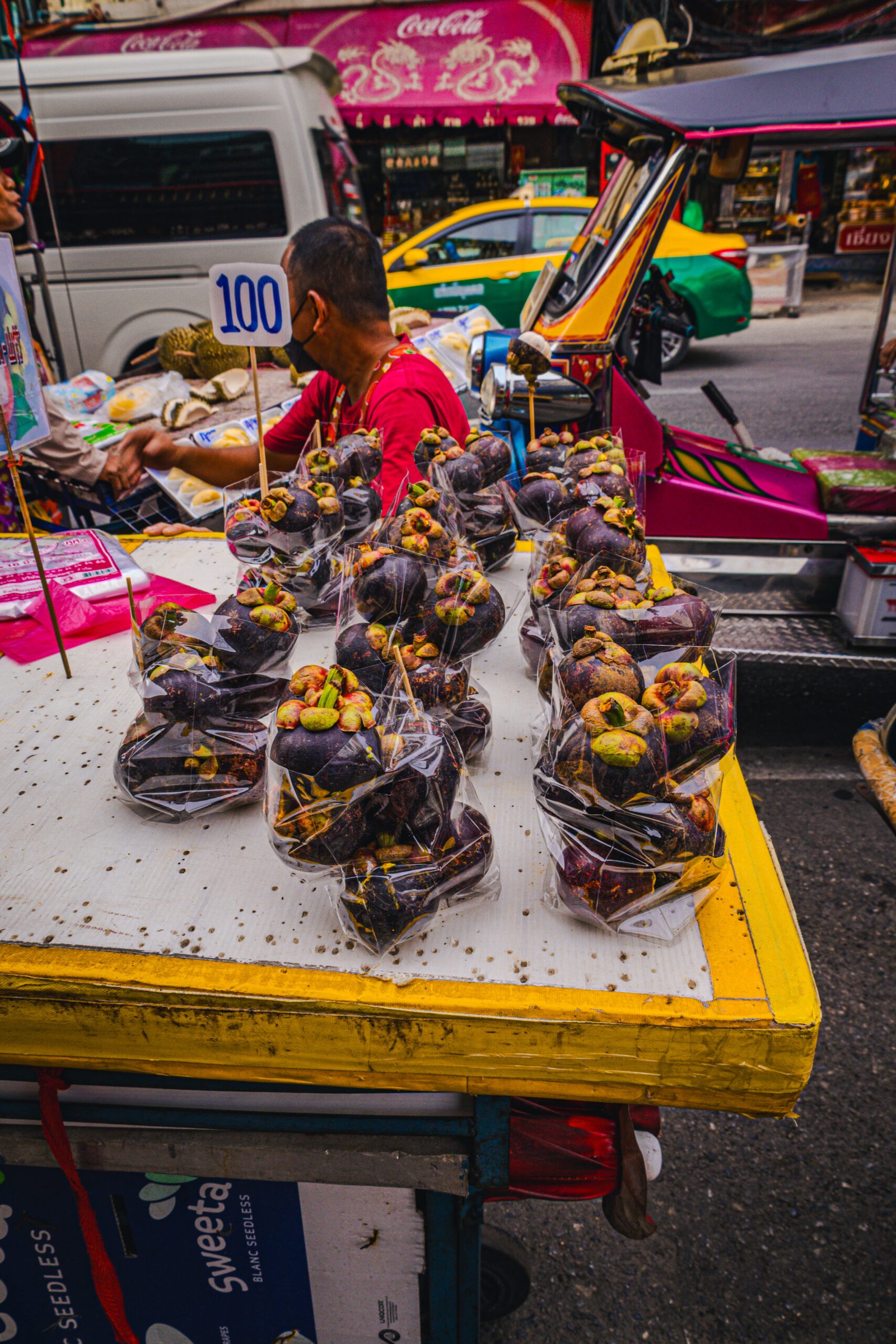



Chinatown is the epicenter of Chinese festivals in Bangkok, most notably:
Chinese New Year: The biggest and most vibrant celebration in Yaowarat, Chinese New Year sees the streets decked out with red lanterns, dragons, and lion dancers. Thousands of people flock to Chinatown to witness the lively parades, cultural performances, and to pay respect at the temples.
Vegetarian Festival: Held in September or October, this nine-day event is marked by strict vegetarianism among participants, with many food stalls offering delicious meatless dishes. The festival also features colorful parades and rituals believed to purify the body and soul.

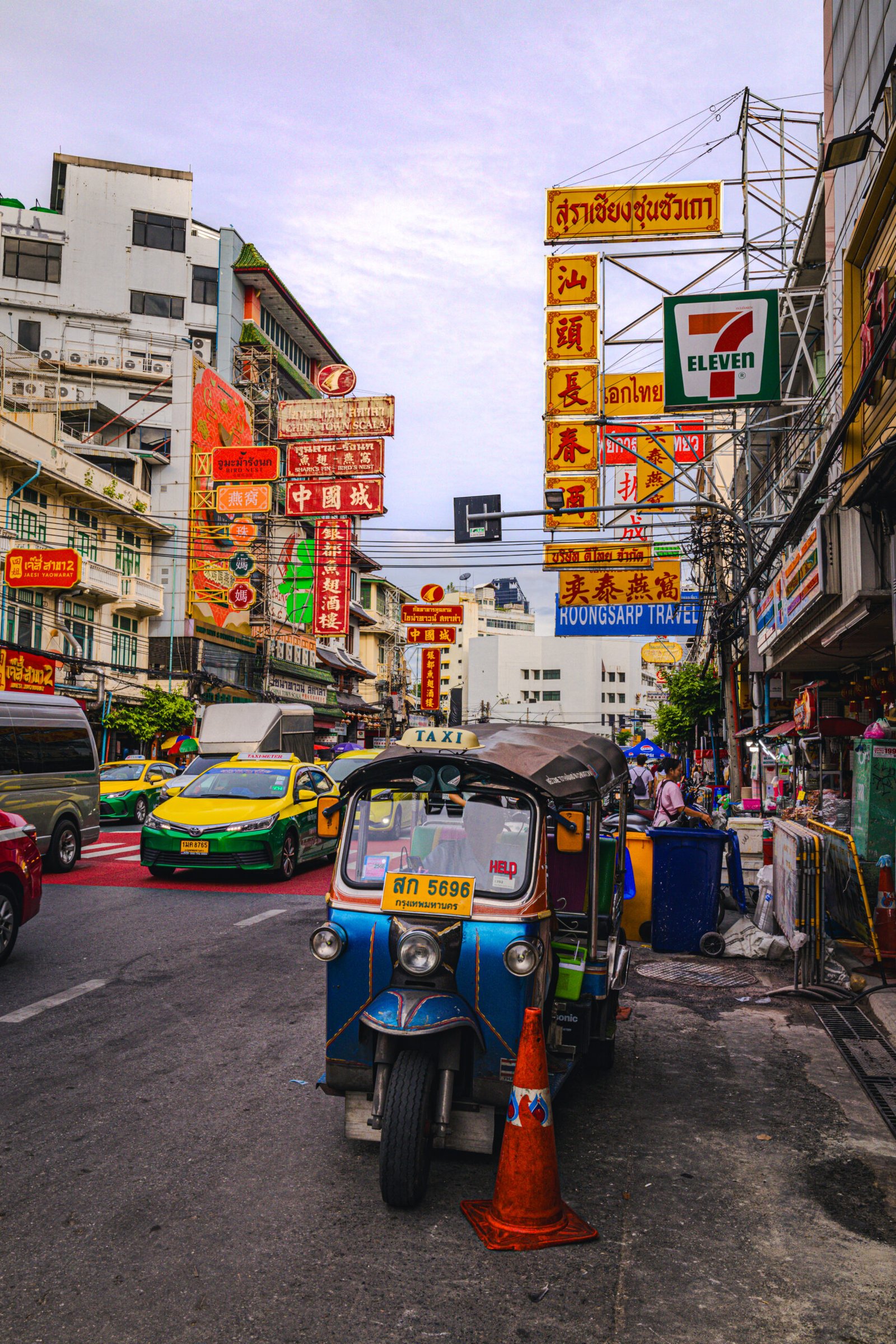
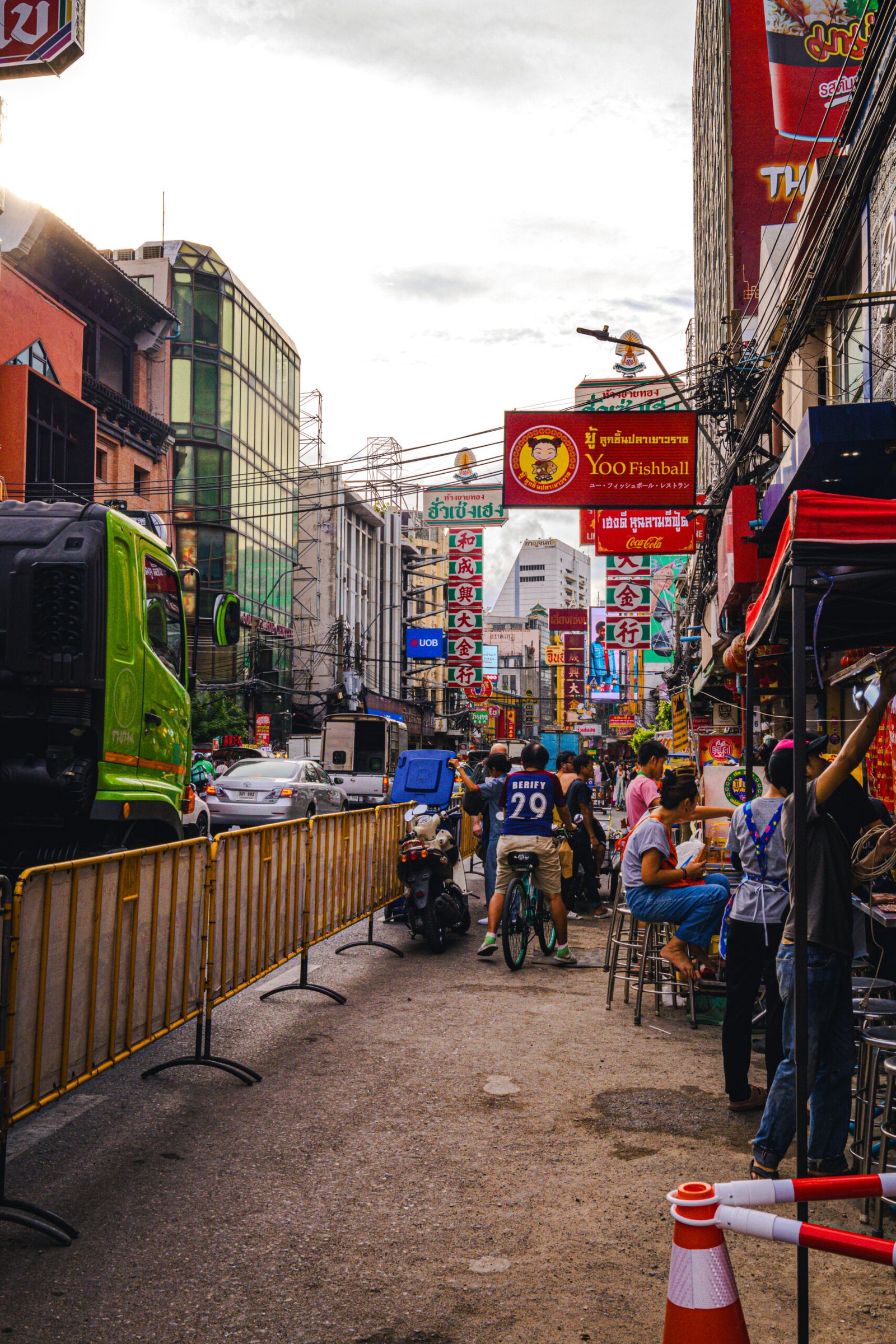

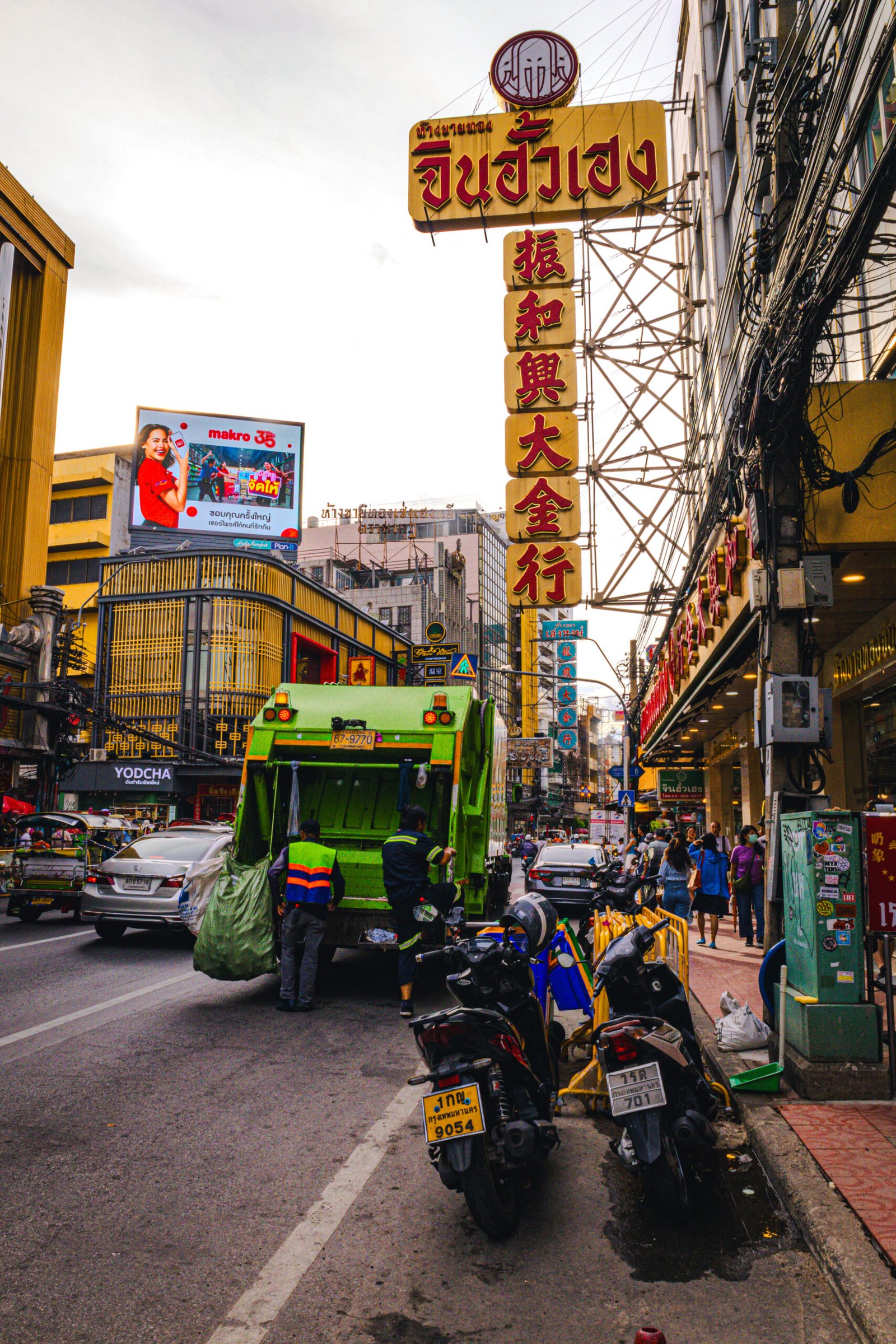
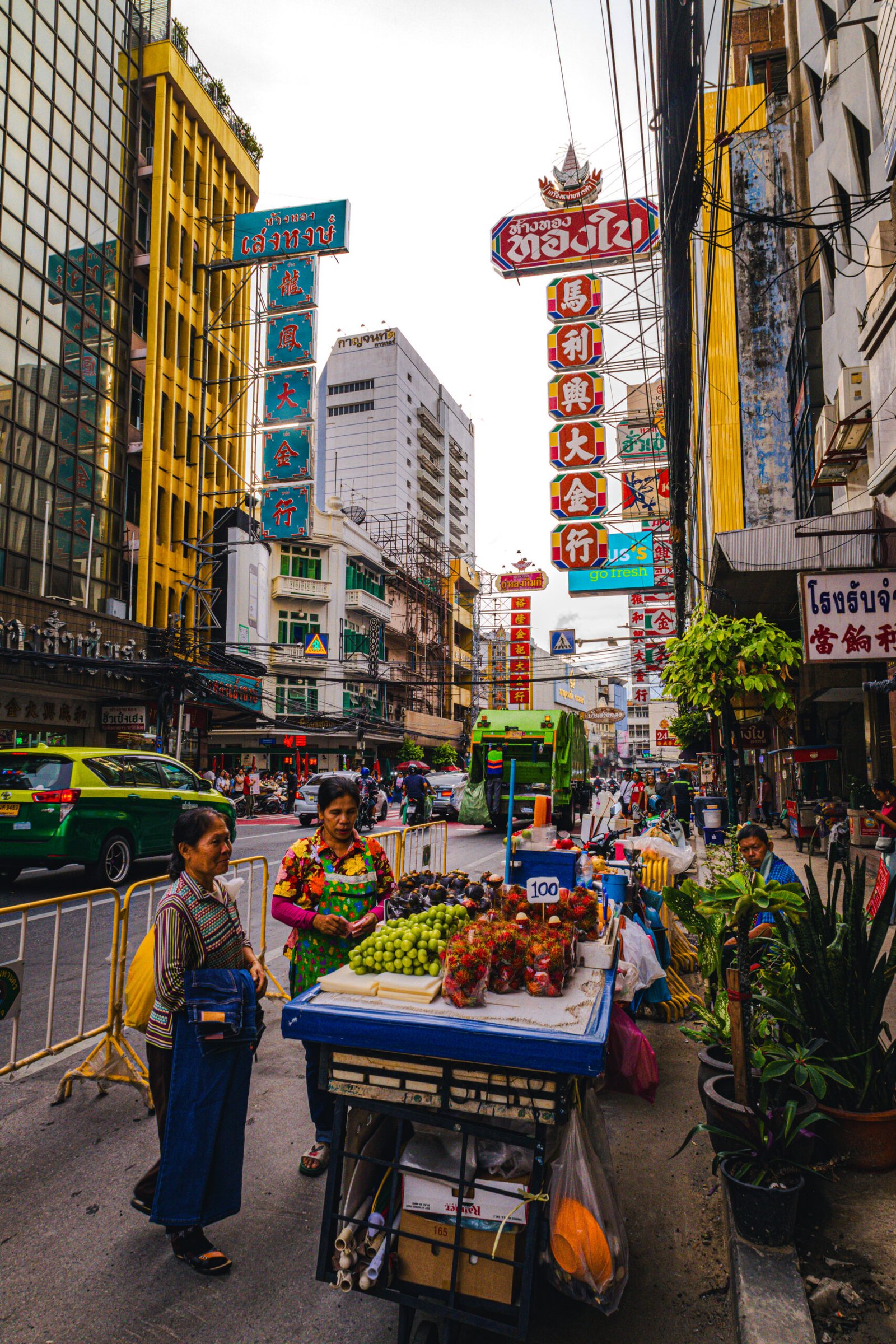
Despite its deep historical roots, Chinatown is not stuck in time. The area has seen a growing blend of old-world charm and modern trends. Trendy bars, boutique hotels, and contemporary cafes have opened, attracting younger crowds alongside traditional businesses.
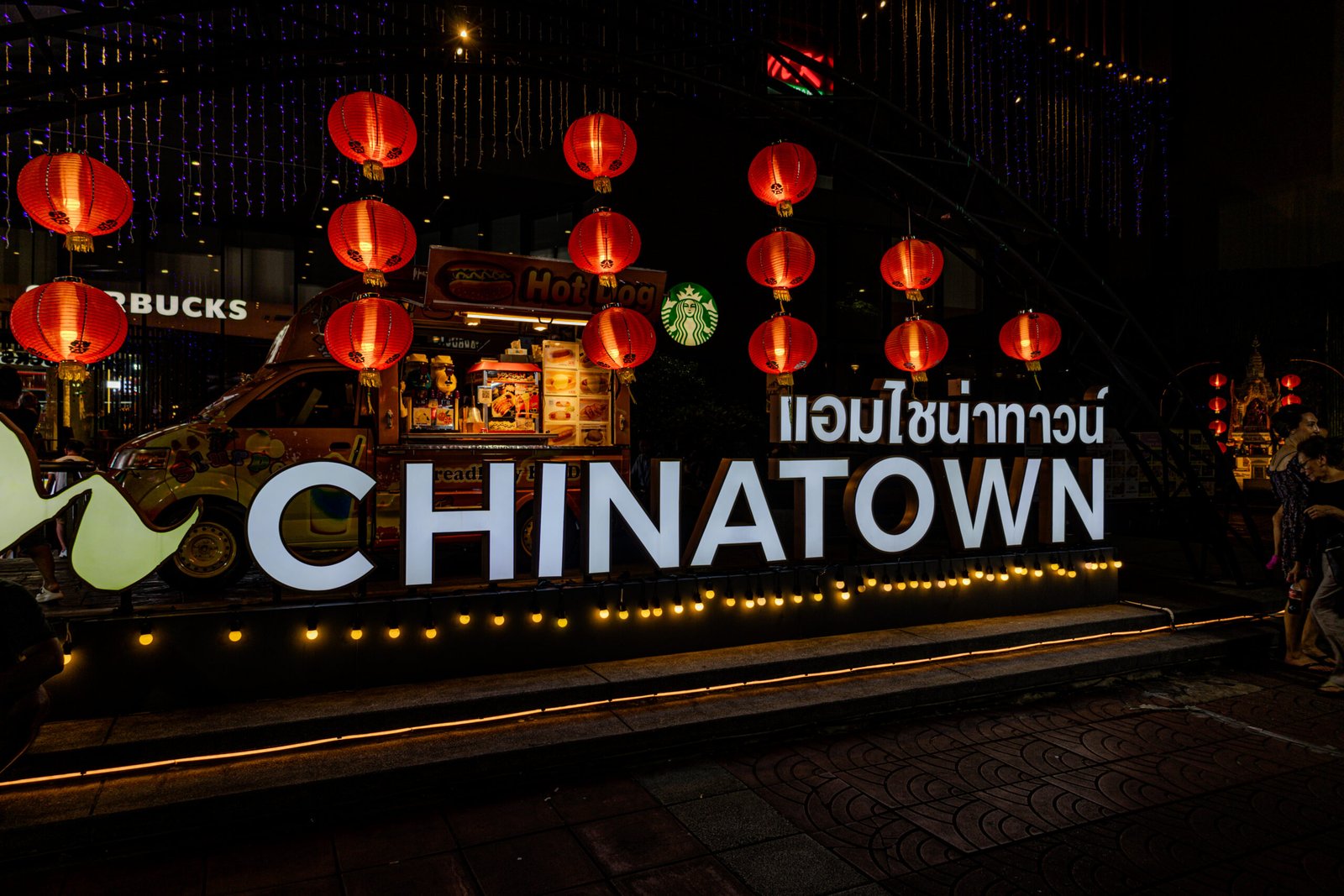
In recent years, Chinatown has also become a popular spot for night markets. The Yaowarat Night Market is particularly famous for its lively street food scene, drawing in tourists who want to sample the best of what the district has to offer after dark.
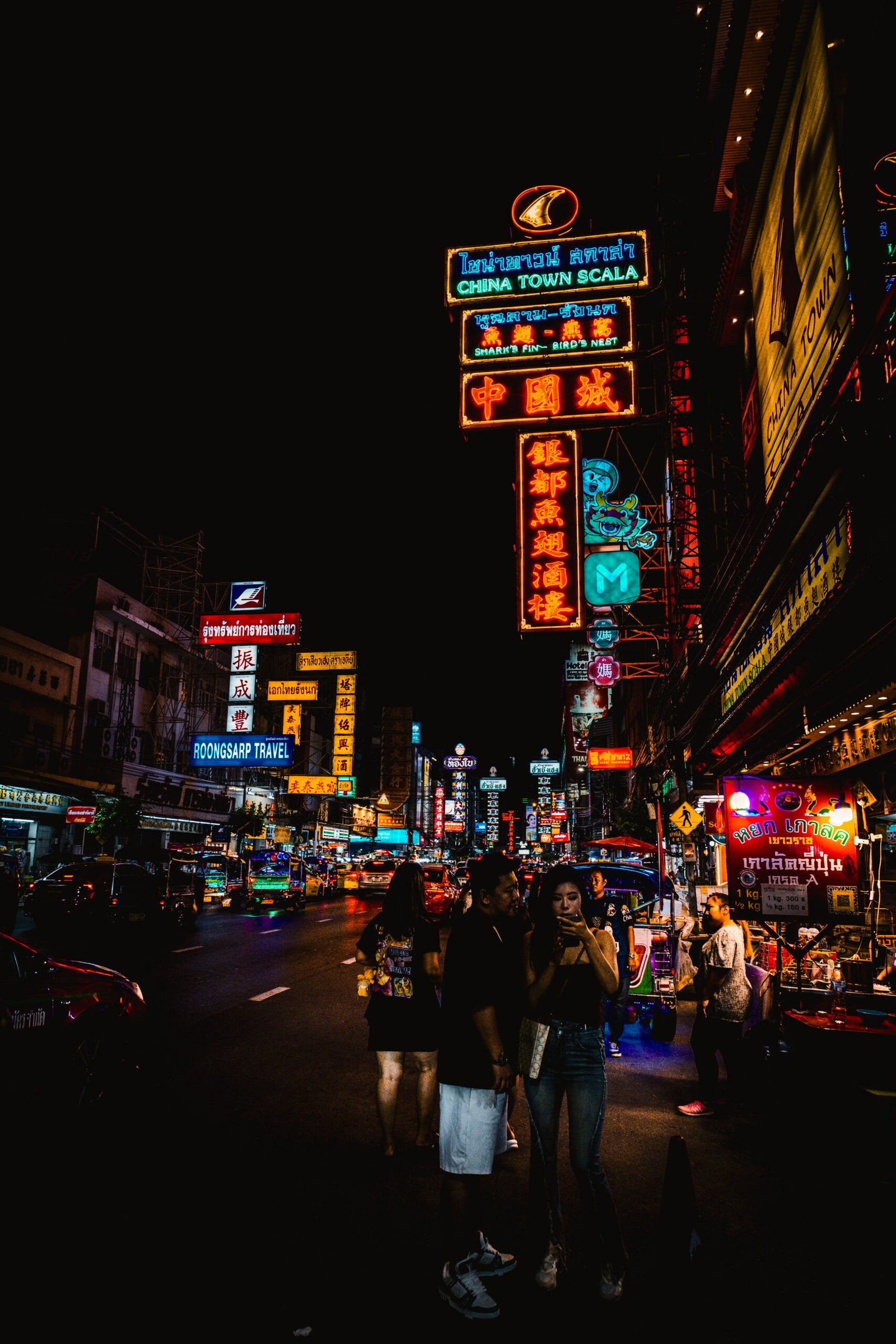

Pa Tong Go Savoey is a popular street food stall in Bangkok, Thailand, renowned for serving pa tong go, a type of Thai-style deep-fried dough. Located near Chinatown, this iconic stall is a must-visit for those seeking an authentic taste of Thailand’s street food culture, particularly for its delicious and crispy pa tong go.
Pa tong go is the Thai version of the Chinese youtiao, often referred to as Chinese doughnuts. These golden, crispy fried dough pieces are typically served as a breakfast item or snack. They have a light, airy texture on the inside with a crisp, slightly chewy exterior, and are usually enjoyed with sweet or savory dips. In Thailand, they are frequently paired with sangkaya (a rich pandan custard) or sweetened condensed milk for a delightful treat.
Pa Tong Go Savoey has been a beloved fixture of Bangkok’s street food scene for decades. The stall has built its reputation on consistency and quality, drawing both locals and tourists alike, earning themselves a Michelin star. Known for their perfectly fried, crispy dough sticks, the owners have turned a simple, traditional snack into an iconic part of Bangkok’s food culture.
The stall is usually busy, especially in the morning and late evening, when Bangkok’s street food culture is at its peak. People flock to the stall for a fresh batch of pa tong go, often enjoying the snack while strolling through the lively streets of Chinatown.
Pa Tong Go Savoey stands out because of its dedication to the craft of making pa tong go. The dough is handmade and fried fresh in front of customers, ensuring that each batch is hot, crispy, and golden brown. The stall’s pa tong go is known for its light and fluffy texture, achieved by careful preparation and frying techniques.
Aside from the traditional plain pa tong go, the stall also offers creative variations such as:
- Pa tong go with pandan custard: A popular option where the crispy dough is paired with a thick, creamy pandan-flavored custard for dipping.
- Pa tong go with condensed milk: Another classic, where sweetened condensed milk is drizzled over the dough, creating a perfect balance of crispy and sweet.
The stall is known not only for its taste but also for its affordability, making it a favorite among budget-conscious foodies. The reasonable prices and satisfying portions ensure that a visit to Pa Tong Go Savoey is a value-for-money experience.
If you’re a dessert lover with a penchant for traditional Thai sweets, the mix of Tub Tim Krob, Lod Chong, and Bua Loy offers a delightful combination of textures and flavors that are sure to satisfy. Each dessert on its own is a classic in Thai cuisine, but when combined, they create a vibrant and refreshing treat that highlights the best of Thai dessert craftsmanship.
Lod Chong is another well-loved Thai dessert, featuring short, pandan-flavored noodles made from rice flour, typically served with crushed ice and sweetened coconut milk. The noodles have a chewy texture and a distinct pandan fragrance that adds an herbal, almost floral note to the dish. Lod Chong brings a cooling sensation, with the shaved ice adding a refreshing, icy bite that complements the creaminess of the coconut milk. It’s both indulgent and refreshing, making it a perfect summer treat.
Bua Loy is the heartiest of the three, consisting of soft, chewy rice flour dumplings bathed in warm, sweet coconut milk. Often, the dumplings come in a variety of colors—purple from taro, orange from pumpkin, and green from pandan leaves—making the dessert visually appealing as well. Some versions include a soft-poached egg, adding richness and depth to the flavor. The warmth of the coconut milk in Bua Loy creates a comforting contrast to the other cooler elements in the mix.
When these three iconic Thai desserts—Tub Tim Krob, Lod Chong, and Bua Loy—are combined into one, the result is a delightful harmony of textures and flavors. The dessert mix brings together the cold, crunchy Tub Tim Krob, the chewy pandan noodles of Lod Chong, and the warm, soft dumplings of Bua Loy. Each bite is an adventure, with the contrasts in temperature, chewiness, and crunch providing an exciting and multi-layered experience for the palate.
Chinatown in Bangkok is a living testament to the city’s multicultural heritage, where Chinese traditions and Thai culture have blended over centuries. Its vibrant streets offer a sensory overload of sights, sounds, and tastes, making it one of Bangkok’s most iconic and exciting neighborhoods. Whether you’re visiting for its rich history, mouthwatering street food, or bustling markets, Yaowarat is a must-visit destination that captures the essence of Bangkok’s dynamic cultural tapestry.
YAOWARAT (CHINATOWN)
Most of the markets, shops, and gold stores in Chinatown open between 9:00 AM and 6:00 PM. The real magic of Chinatown starts in the evening, especially the street food scene along Yaowarat Road, which comes alive around 5:00 PM. The street food stalls typically remain open until 11:00 PM or midnight, while some stay open even later into the night.
